Editors note #1
Bill Muller and Ross Squire drafted the attached guide to walk people through the public comment process.The guide presents the options that will most enhance the long-term quality of striped bass fishing, conserve the population, and is the most practical to implement.most conservation friendly. I hope none of our readers will be the one that will piss and moan online about striped bass stocks and yet when its time for action they will find a reason not to go to the hearings. If you can attend, please do.
Zeno
The Atlantic States Marine Fisheries Commission (ASMFC)
Addendum IV to Reduce Striped Bass Mortality
Under Amendment 6 of Striped Bass Management Plan
Purpose of this Guide: The addendum is a long document with occasional overlapping sections, it is sometimes confusing with regard to one and three-year approaches, and provides tables and graphs that are not always self-explanatory for the average angler, since the document has been prepared for commissioners, scientists, and managers.
The following is an attempt to distill 36 pages for quick consumption. It provides a guideline that anglers can use when writing letters or making comments at the upcoming hearing on Tuesday, September 16, 2014. The guide should assist in selecting addendum options and management scenario options that best benefit striped bass and the typical striped bass angler.
Written Response Period: Anytime until 5:00 PM September 30, 2014. Respond via e-mail or in writing. Your letter should be short so that managers will read it, and reflect your addendum and management option preferences.
The Long Island Public Comment Hearing: If you plan to attend to support proper striped bass management and you desire to speak, please see an ASMFC representative and fill out a speaker’s card. Please keep your comments short (ASMFC typically provides only a few minutes to speak per person) and your comments should reflect your preferred options and management sub-options. You may hand in a written version of your comments, too.
Date: Tuesday, September 16, 2014
Time: 7:00-9:00 pm
Location: Stony Brook University Wang Center – Room 201
A schedule of other Public Comment hearings
Massachusetts
September 2, 2014
10:00 am – 12:00 pm
Nantucket Community Room
4 Fairgrounds Road
Nantucket, Massachusetts
jared.silva@state.ma.us
Massachusetts
September 2, 2014
6:00 pm – 8:00 pm
Massachusetts Maritime Academy
Admiral’s Hall
101 Academy Drive
Buzzards Bay, Massachusetts
jared.silva@state.ma.us
Massachusetts
September 3, 2014
6:00 pm – 8:00 pm
MA DMF
Annisquam River Station
30 Emerson Avenue
Gloucester, Massachusetts
jared.silva@state.ma.us
New Jersey
September 4, 2014
7:00 pm – 9:00 pm
Galloway Twp. Branch of the Atlantic Co. Library
306 East Jimmie Leeds Road
Galloway, New Jersey
russ.allen@dep.nj.gov
Massachusetts
September 4, 2014
6:00 pm – 8:00 pm
Viking Club
410 Quincy Avenue (Route 53)
Braintree, Massachusetts
jared.silva@state.ma.us
Maine
September 4, 2014
6:00 pm – 9:00 pm
Orion Performing Arts Center, MSAD#75
Mt. Ararat Middle School
66 Republic Avenue
Topsham, Maine
Terry.Stockwell@maine.gov
New Jersey
September 9, 2014
7:00 pm – 9:00 pm
Ridgefield Park Elks Lodge #1506
Corner of Spruce Avenue and Cedar Street
Ridgefield Park, New Jersey
russ.allen@dep.nj.gov
Delaware
September 11, 2014
6:00 pm – 8:00 pm
DNREC Auditorium
89 Kings Highway
Dover, Delaware
john.clark@state.de.us
New Jersey
September 15, 2014
7:00 pm – 9:00 pm
Toms River Town Hall
L. M. Hirshblond Room
33 Washington Street
Toms River, New Jersey
russ.allen@dep.nj.gov
New York
September 16, 2014
7:00 pm – 9:00 pm
Stony Brook University Wang Center
Room 201
Stony Brook, New York
Carol Hoffman at 631.444.0476
carol.hoffman@dec.ny.gov
Rhode Island
September 17, 2014
6:00 pm – 8:00 pm
University of Rhode Island
Corless Auditorium
South Ferry Road
Narragansett, Rhode Island
nicole.lengyel@dem.ri.gov
Pennsylvania
September 17, 2014
6:00 pm – 8:00 pm
Silver Lake Nature Center
1206 Bath Road
Bristol, Pennsylvania
elevis@pa.gov
Virginia
September 22, 2014
6:00 pm – 8:00 pm
Virginia Marine Resources Commission
2600 Washington Avenue, 4th Floor
Newport News, Virginia
rob.oreilly@mrc.virginia.gov
Potomac River Fisheries
September 23, 2014
6:00 pm – 8:00 pm
Potomac River Fisheries Commission
222 Taylor Street
Colonial Beach, VA
martingary.prfc@verizon.net
New York
September 23, 2014
7:00 pm – 9:00 pm
NYSDEC Region 3 Office
21 South Putt Corners Road
New Paltz, New York
Kathy.Hattala@dec.ny.gov
Maryland
September 25, 2014
6:00 pm – 9:00 pm
Cadby Theater,
Kent Humanities Building
Chesapeake College
1000 College Circle
Wye Mills, MD
mluisi@dnr.state.md.us
North Carolina
September 29, 2014
6:00 pm – 8:00 pm
Dare County Government Complex
954 Marshall C. Collins Drive
Manteo, North Carolina
michelle.duval@ncdenr.gov
Importance: Striped bass stocks are down again due to poor spawning and overharvesting. We need meaningful management measures to reduce the harvest by 25%. Your letters and attendance can help drive home what we anglers need and want in order to protect striped bass and the quality of our fishing.
Guide To Responding
Directions: Your letters and oral presentation at the public hearing needs to contain the following for each relevant category.
- Select and/or state an option (A, B, C, etc.)
- Select and/or state a management scenario option (example: B3, B17) under that option.
- Send your comments to:
| Contact |
|
| Sen. Philip BoyleNew York 4th Senate District 69 West Main StreetBay Shore, NY 11706-8313 Phone: 518-455-3411 Position:Commissioner Legislative |
philmjboyle@gmail.com |
| James Gilmore, DirectorNYS DEC Bureau of Marine Resources205 N Belle Mead Rd. Ste 1
E. Setauket, NY 11733-3456 Phone: 631 444-0430Position: Commissioner Administrative |
jjgilmor@gw.dec.state.ny.us |
| Emerson HasbrouckCornell Cooperative Exten Marine Prog423 Griffing Ave, #100
Riverhead, NY 11901-3071 Phone: 631 727-7850 Position: Gov. Appointee |
ech12@cornell.edu |
| Mr. Mike WaineASMFCFishery Management Plan Coordinator
1050 North Highland Street, Suite 200 A-N Arlington, VA 22201 |
mwaine@ASMFC.org |
| The Honorable Andrew M. CuomoGovernor of N.Y. StateNYS Capitol Building
Albany, NY 12224 Phone: (518) 474-8390 |
A listing of all ASMFC Striped Bass Management Board representatives can be found at:
http://www.asmfc.org/files/CommitteeLists/atlanticStripedBassBoard.pdf.
Recommended Options
The following options are recommended as those that will most enhance the long-term quality of striped bass fishing, conserve the population, and is the most practical to implement. The full Draft Addendum can be viewed at:
http://www.asmfc.org/files/PublicInput/StripedBassDraftAddendumIV_PublicComment.pdf
Section |
Option |
Section 2.5.1: Stock assessment Reference Point Option |
Option B: Uses the preferred 2013-benchmark assessment |
Section 2.5.2: Chesapeake Bay Assessment Reference Point Option |
Option B: Uses a preferred stock assessment reference point |
Section 2.5.3: Albemarle/Roanoke Reference Points |
Option B: To be managed by State of North Carolina
|
Section 2.6: Timeline To Reach Harvest Reduction (mortality) |
Option A: Reduce mortality by 25% in one year |
Section 3.0: Proposed Management Scenario Options |
Coastal Recreational Fishery: Select B3 (one fish @ 32″) Chesapeake Recreational Fishery: Select B10
Chesapeake Commercial Fishery: Select B17
|
Section 3.1: Commercial Quota Transfers |
Option A: Prohibits the transfer of quotas from one are to another should quotas not be reached among fishers in a given region. |
Section 3.2: Commercial Size Limits |
Option A: Would require the same size limits for commercial harvesters should the recreational size limit be increased
|
Editors note #2
Here is newest blog post by John McMurray from reel-time.com
We hope this will make you understand the process a little better
Zeno
Striped Bass Hearings Set
Time to be heard, but know what to say…
Well, after about eight years of a painfully noticeable decline in striped bass abundance, and the slow and arduous crawl toward doing something about it, the rubber is finally beginning to hit the road here. A draft version of Striped Bass Draft Addendum IV, which seeks to reduce fishing mortality on striped bass, has been released, and public hearings are set. You may find the complete document here: Draft Addendum IV. And the hearing schedule here: Public Hearings. (Note: If you are not a regular reader of this blog, or are not familiar with the situation, you may find some background here:Where we are With Striped Bass.)
The Draft Addendum isn’t a terribly difficult read if you are familiar the subject matter, but it is filled with the sort of technical jargon that can take a little time to understand if you don’t immerse yourself in this stuff daily. So I’m gonna try and simplify it here and maybe boil it down to a few things we should really be aware of, including what we should support and what we should oppose.
Before getting to it though, I wanted to point out Section 2.2.3, which talks about “Ecosystem Considerations” in the decision-making context. Yes, of course it’s good to incorporate ecosystem considerations (to greatly simplify it, we’re talking about the what-eats-what here) into any fisheries management decision. But I have to admit, the way that this was done concerns me a little. It seems to set up and support arguments for those folks who have historically, and still do claim that striped bass are eating all the blue-claw crabs, river herring, winter flounder, weakfish, you name it.
This sort of thing gives managers cover to allow excessive harvest of striped bass, and to disregard pleas to manage striped bass for abundance… And, well, it’s bullshit. There is very little if any science to back up the notion that striped bass abundance harms other species. Yes, they’re opportunistic feeders, which means that at some point in their lives, along some section of coast, they’re likely eating a little of everything that’s managed by ASMFC. I’ve said it before in other blogs, striped bass have existed in abundant numbers alongside these other species since, well, since they existed. Believe me, it’s no coincidence that the folks often making such arguments are the ones who just want to kill more striped bass, or allow their constituents to do so.
But moving on, let’s talk about what we should be focusing on for the purpose of providing public comment on the document.
The first section we should be concerned about is Section 2.5.1 Coastwide Reference Point Options. “Reference points” in this case are simply the thresholds that require management action. In other words if fishing mortality gets above a certain point, something needs to be done about it. Likewise if the spawning stock biomass gets below a certain point there should be some management action. If you want a better understanding of this I suggest reading my blog on this from last year. ASMFC Moves on Striped Bass. If you are a regular reader you know that there was a new stock assessment completed last year, which of course uses better, more up-to-date science. It recommends a lower, more appropriate fishing mortality reference point.
There are, two options in this Section 2.5.1: Option A, Status Quo (in other words, using the older outdated science) or Option B, using the 2013 Benchmark Assessment reference points. Obviously, we should support Option B in Section 2.5.1. I don’t expect there to be a lot of debate on this one, but we should still let it be known that we support the use of the new and better science.
We should also be somewhat concerned with Section 2.5.2 Chesapeake Bay Stock Reference Point Options. Historically, the Chesapeake fishery exploited smaller fish, and fished under a lower reference point, than did fishermen on the coast. Option A would reverse that relationship, and permit Chesapeake fishermen to exceed the overfishing threshold in the latest stock assessment. That should be a non-starter. Everyone should support Option B: Use coastwide population F reference points as established in Section 2.5.1.
The really important part of this document is Section 2.6, which deals with whether or not we choose to reduce fishing mortality in one year, or phase in (read: “delay”) such reduction over three years. We most certainly want Option A here, which would require the reduction to occur all at once in the 2015 fishing year. Option B would allow a much smaller reduction to be imposed over three years. Seriously man… we’ve had enough delay up to this point. I think most readers of this column would agree, we need a significant reduction ASAP. So… Support Option A under Section 2.6. Make a note.
Section 3.0 Proposed Management Program kinda piggybacks on this. Option A is status quo, meaning no reduction in fishing mortality at all. Obviously we do not want this! Option Brequires a full 25-percent harvest reduction from 2013 levels to take place next year. Option Crequires a 17-percent harvest reduction next year, which would achieve the required harvest reduction over three years. Option D would require an incremental seven-percent reduction over the course of three years, which is well, pretty close to doing nothing at all. So… what we want here is Option B under Section 3.0, which would achieve the full 25-percent reduction in harvest by next year. Got it? Okay, let’s move on.
The rest of this section goes on to specifics, i.e. bag and size limits. Of course this all depends on whether or not the Commission chooses Option A, B, C or D, so I’m not gonna go into them all, but assuming the Commission does the right thing and chooses Option B, requiring the full 25-percent reduction to be taken in 2015, we should support Option B3 – a one fish bag limit and a 32” size limit. This is the most conservative and most precautionary option and appears to result in a greater than 31-percent harvest reduction. For the Chesapeake Bay Management Areas we should support most conservative option there also. There appear to be two equally conservative options here: Option B10 – one fish at 18” or Option B15 which sets a hard quota. It would be up to the states to set size and bag limits. If we go by numbers alone B15 results in a slightly greater reduction (32-percent vs. 31-percent), so we should probably go with Option B15… but either one works.
Of course if the Commission doesn’t go with Option B then, well, it’s a whole different ball game. Intuitively, none of those size and bag limit options under Option C and D really appear to do much to me, especially not the ones under Option D. Look at the table for yourself. We shouldn’t support the three year timeline in any case, so I’m not sure we should even consider commenting on any of these options. Doing so might make some managers believe that we’re not completely opposed to the phase-in.
Moving on, let’s talk about theProposed Commercial Fishery Management Options for a minute.Option B16 takes a 25-percent reduction from the Amendment 6 coastal quota. The draft addendum doesn’t give us a lot of choice here, as the Management Board voted to remove what was really the right option—a 25-percent reduction from the actual commercial catch (which would subject the commercial fishery to the same standard being imposed on us.) Option B16 won’t necessarily achieve the needed reduction, but as it’s better than nothing, it’s what we’re going to have to live with.
Down in the Chesapeake, Option B17 takes a 25-percent reduction from 2013 commercial quota. Option B18 Takes a 25-percent reduction from 2012 commercial harvest. This is a difficult call. Option B17 yields the greatest harvest reduction, and is consistent with the approach taken with the coastal quota. On the other hand, Option B18 is a reduction from actual harvest, and is consistent with how the recreational reduction is calculated. For reasons of both consistency and practicality—it keeps more fish alive—B17 is probably the preferable option.
So, in short here are the basics you should know if you plan on attending one of the hearings or submitting writer comments (and you certainly should be doing one or the other.) First, in Sections 2.5.1 and 2.5.2, we want Option B, which simply adopts the best available science, as set out in the 2013 Benchmark Assessment. In Section 2.6, we should be supporting Option A, which would prevent the three-year phase-in of the harvest reduction from being adopted. Option B of Section 3.0 affirmatively requires the full reduction to be imposed next year, so we should support that one, too, and oppose any option to stretch out harvest reductions over three years. We DO NOT want more delay. As far as size and bag limits go, we should support the most precautionary option, Option B3 – a one fish bag limit and a 32” size limit—on the coast, and B15—a hard quota—in the Chesapeake. These options are certainly the most important, and really the only ones that you need to comment on at this point.
I would also, however, recommend commenting about your personal experiences with striped bass. How the decline has affected you and the businesses around you. Because Commissioners need to hear about the real public and economic pain that has come from the decline of this once abundant resource. They need to know that there are real people and real businesses that have and are depending on this resource. They need to know that managing for abundance benefits more than just the few narrow interests that may benefit from liberal size and bag limits.
Please do go to a public hearing. If you can’t, well, then you have to submit written comments, which will be accepted until September 30. Such comments should be sent to Mike Waine, Fishery Management Plan Coordinator, 1050 N. Highland St, Suite A-N, Arlington, VA 22201; 703.842.0741 (FAX) or at mwaine@asmfc.org (Subject line: Draft Addendum IV.)
If you sit on your ass for this one, well, then you have no one to blame but yourself. As I’ve mentioned in other blogs, we haven’t been as loud as the pro-harvest folks. It’s time for us to be loud.

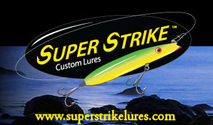

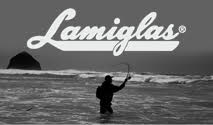
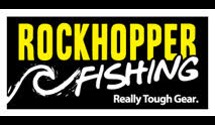

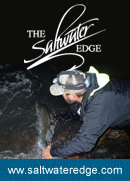
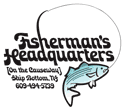




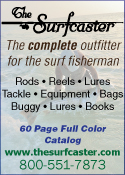
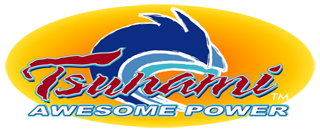

Thank you for heads up!!!!! Time to get loud.
↓Join stripers forever 4 a unified voice. Make it a gamefish !!!!
↓NH had their public hearing, all in attendance were in favor of Option A, B3. It was a real eye opener to see and hear the amount of SSB taken by both recreational and commercial anglers. Tighter regulations need to be implemented that facilitate a sustainable harvest, and maintain a realistic target. Striped bass have no way of counteracting technology, cell phone, up to the minute reports, FB, better gear…..Keep only what you need and teach others to do the same:)
↓Lets show the freshwater bass guys we love and protect our gamefish just as they do. Eat a hot dog, release your stripers. They are too valuable to kill. Heritage Gamefish status needed!
↓